Accurate Information for Yachtsmen Entering the USA
Entering the USA for the first time by yacht does not permit use of the Visa Waiver Scheme. However, if you are a citizen of a Visa Waiver Program country, FIRST entry into the USA and its protectorates is permitted by commercial carrier (i.e. a ferry or plane), or by foot/car. Once the 90-day visa is obtained on arrival – this then grants legitimate entry when subsequently re-entering the USA on a private yacht (within the 90 day limit of the visa). Foreign cruisers continue to confirm that this is still possible. Read the report for more details.
Published 12 years ago, updated 1 year ago
Entering the USA for the first time by yacht does not permit use of the Visa Waiver Scheme. However, if you are a citizen of a Visa Waiver Program country, FIRST entry into the USA and its protectorates is permitted by commercial carrier (i.e. a ferry or plane), or by foot/car. Once the 90-day visa-waiver is obtained on arrival – this then grants legitimate entry when subsequently re-entering the USA on a private yacht (within the 90 day limit of the visa-waiver). Foreign cruisers continue to confirm that this is still possible – however – remember the clock is ticking from the moment you first enter the US, so only really works for short visits. For other visa options see USA Immigration.
Our thanks to Suzie and Robin Roots for compiling this accurate information for Noonsite readers (in 2012) and to subsequent cruisers who have commented (speech bubble icon) that entry into the USA this way is still possible (latest confirmation October 2024).
Accurate Information for Yachtsmen Entering the USA
Entering USA waters (including the Spanish Virgins and Puerto Rico) using the Visa Waiver scheme
To add to the information pool about entering the USA on a private yacht, we met recently with Customs and Immigration staff in both the USA Virgin Islands (St Thomas) and the Spanish Virgin Islands (Culebra). Since all the personnel we spoke to fundamentally gave us the same advice, I have recorded it below.
Firstly, as long as a person’s FIRST entry into either the USA or USA protectorates (i.e. the Spanish Virgin Islands of Culebra, Vieques and Puerto Rico) is by commercial carrier (i.e. a ferry or plane), then the 90 day visa-waiver obtained on arrival grants legitimate entry to subsequent re-entry on a private yacht.
It was stressed that this is not a loophole, but perfectly legitimate use of the current legislation.
The only thing which is essential is that you must be in possession of a Visa Waiver form [ESTA] when you board the ferry or plane to the USA or its protectorates; it is highly unlikely, though, that you will be allowed to board a ferry without providing evidence of your visa waiver when you purchase your ticket.
[Editor’s Note: The ESTA is advance notice to and approval by US Immigration to travel using the Visa Waiver. Once the ESTA application is done (online) and approved (which normally happens right away), the ESTA is valid for 2 years from the date of application. It’s best to print this confirmation and take it along when you enter the US, just in case the officer doesn’t have it. However, your details provided in the ESTA application and the approval are normally stored in the US Immigration system and available to any US Customs and Immigration officer when you enter.]
Cruisers wanting, at a later date, to extend their 90-day visa-waiver should note that normally an extension will NOT be granted unless the applicant leaves the country and applies for a full visa via a USA consulate in the usual way. So anyone wishing to take a longer cruise to the USA, inter-coastal waterways, etc. should obtain a full visa prior to setting off (consulates in the UK and Barbados are commonly used by cruising folk arriving from the Atlantic).
[Noonsite Editor’s Note: For other visa options see USA Immigration]
This is how the process works as of March 2012:
(1) Obtain an ESTA (Electronic system for travel authorization) by applying online well in advance of travel – Official ESTA Application Website, U.S. Customs and Border Protection (dhs.gov)
(2) Take a ferry or plane return trip to a convenient USA destination (it is easy to go to the USVI from the BVI by ferry). [Editor’s Note – it’s also easy to walk from Canada to the USA].
(3) Expect for each person to be fingerprinted and photographed at the USA Immigration desk on arrival. The you will be issued with the 90-day visitor visa-waiver. This is multiple entry within the 90 day period.
(4) Return to your yacht and re-enter USA waters when desired, following the normal arrival protocol. [Editor’s Note – see USA Clearance].
(5) Expect that you will be told to remain on board until you are advised it is OK to land.
(6) Obtain your yacht’s cruising licence from Customs; this will be valid for 1 year. [Editor’s Note – now available via ROAM].
(7) Expect to pay arrival costs which vary according to LOA; expect to pay between $20-40. No charge in St Thomas as it is a free port.
(8) Obtain clearance in the usual way before departing USA water.
(9) Note that your passport will not be stamped again, regardless of how many times you enter or re-enter USA territory within the 90 visa period.
(10) The De-Cal program is not applicable to private, non-USA registered boats, although we inadvertently bought one online!
(11) We were asked by the very helpful officials in St Thomas to refer Noonsite readers to the publication Carrier Information Guide- English (cbp.gov). It does not have more than the bare bones of the acceptable process though.
Suzie and Robin Roots
SY True Blue 1
See the Speech Bubble icon to read feedback from other cruisers using this system to enter the USA (latest comment October 2024).
Related to following destinations: British Virgin Islands, Canada, Puerto Rico, US Virgin Islands, USA
Related to the following Cruising Resources: Crew Documents, Documents Required, Visas



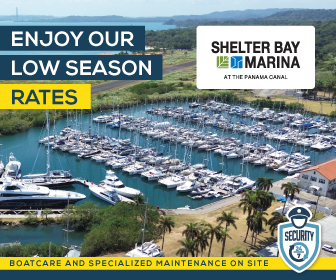
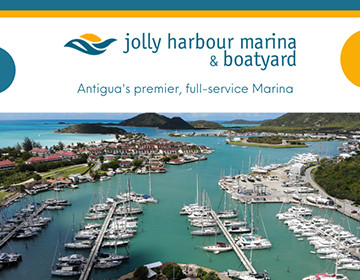
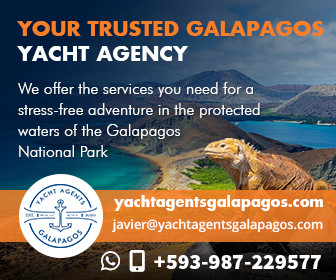
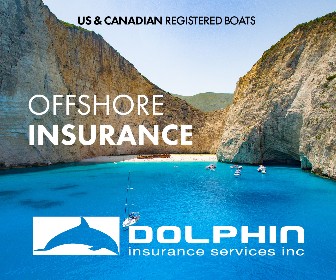
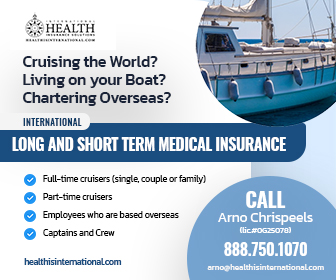
If I bring any passengers or crew (family) do they also need to go to the embassy to get the B1 B2 Visa? Or can they simply use their own ESTA .
I was hoping to spare them the torture of going to an embassy and getting all the paperwork.
The only way to get around securing a B1/B2 visa is to have a 90-day visitor visa-waiver – which can only be obtained by entering the US by commercial carrier prior to arriving by yacht (as outlined in the article).
We are an Australian couple and can confirm that this process worked for us recently.
We were planning to enter the US on our yacht in Maine, coming from Canada. Having obtained our ESTAS, we anchored at Friar’s Bay on the west coast of Campobello Island and walked to the FDR International Memorial Bridge. There is a Canadian border crossing at one end of the bridge and a US one at the other end. There was no need to check out of Canada so we walked across the bridge to the Lubec USA Border Protection office.
We didn’t need to show our ESTA approval, but we definitely needed to have it. My impression is that the (very friendly) officer could see it on the system. We were photographed and fingerprinted and then the officer issued our 90 day tourist visas. The officer did stamp our passports, but I recall he said that he is old fashioned and still stamps. The stamp simply says “admitted under class WT” with the dates. They call it a I-94 record of entry. I asked the officer for the numbers of ours, which he duly wrote down on a separate piece of paper. You can also look the number up on their website – http://www.cbp.gov/I94 – and if you need a physical copy it can be printed. The website says once printed this is recognised proof of lawful entry. We paid US$6 each for entry and the receipt says “visa waiver”.
We walked back across the bridge (no need to check out of the USA) and checked into Canada and went back to the boat to wait for a weather window to depart for Maine.
Once in US waters (the officer did say don’t try to check in via the ROAM app until we were actually in US waters), we reported in with the CBP ROAM App and shortly after had a video interview during which we were asked some routine questions and had to show the officer through the boat. We were subsequently notified via the app and email that our arrival had been processed and our cruising licence issued (for 12 months). We have also been able to report our US ports of call via the app. Note, we were not at anchor or moored when we checked into the country, simply just in US waters.
ROAM worked very well for the boat check in and cruising permit, but not so well for domestic check initially. The tab for “report cruising port of call” did not appear on the app for me. I emailed the ROAM app team and got a prompt response saying I should check that our cruising licence details were entered correctly, which they were. I emailed again to confirm that the details were correct and that it still wasn’t working (despite deleting app and re-installing it, and turning phone off/on), but never heard back from them. However – about a week after entry the tab appeared and since then I have been able to report in easily.
I asked about checking out when we leave and was told that there was no need to check out -just leave the country.
We are happy to answer questions via email: plshanday@gmail.com
Worked for me – a Brit – as of March 2023.
We are an Australian family on SV Happy Days I and friends of SV Mirabella – using their experience we have just entered USA ourselves.
Our experience was slightly different but we can confirm that it is possible.
We left our yacht at a marina at Isla Mujeres, Mexico and flew from Cancun to Fort Lauderdale to ‘activate’ our 90 days on our ESTA visas. (There was a lot of entry paperwork to have in order to even board the plane.) Flew back and jumped on the next weather window. We did not fill in the eNOAD as we were advised via email this was no required for a vessel under 300 ton. However we did get the ROAM app ready before leaving Mexico and printed our I-94 (proof of the 90 day active period). We sailed to Miami, FL and as soon as we were in cell phone range (with international roaming data) we submitted our ROAM entry report – we still needed to call the CBP officer and get confirmation before dropping anchor and then had 24 hour to show up in person at the CBP office at the cruiseship terminal to show our passports and I-94 paperwork.
Following this you have 48 hours to complete boat entry paperwork to gain a USA Cruising permit.
The officials at Miami were easy to deal with and helpful over the phone as we worked through all the procedures to confirm we were doing everything correctly.
Anyone with further questions looking to do something similar on the ESTA visa can email us sailingwithsix@gmail.com
I may be duplicating this submission but have just found this thread. I’m based in New Zealand and hold both British and New Zealand passports. I am in negotiations to buy a yacht in Florida and want to fly there, take possession of the yacht and sail out of the USA. Can I legally fly in under the Visa Waiver Programme and then depart by yacht?
With a title like that Sue, there will be a lot of French people (I’m French I can joke them) who will arrive by their own boats in US with only an ESTA made online few days before… There is a huge misunderstanding of all immigration law in French people brains. For who are reading me : il est absolument IMPOSSIBLE d’arriver aux USA avec votre propre voilier en ayant fait seulement un ESTA à 14$ en ligne. Seuls les Canadiens peuvent le faire sous certaines conditions, donc si votre voisin l’a fait, vérifiez tous les détails… Les autres, nous français, devons faire un aller retour avec un avion de ligne ou un ferry autorisé au préalable pour avoir le tampon dans le passeport avant de venir en voilier privé. Sinon il faut un B1/B2 obligatoirement.
Thanks very much for this information, it was very helpful for us in preparation and I’m happy to report that the procedure is still valid as of May 2021.
We sailed from Bermuda to the US, New York under the Visa Waiver Program in May 2021 and had no issues.
Initially, we flew from Bermuda to Atlanta (with a valid ESTA in our pocket) to optain a Visa Waiver for 90 days. We then returned to Bermuda, waited for the first weather window and set sail to New York.
Before we sailed we filled in the electronic Notice of Arrival/Departure (eNOAD) and once we arrived we reported our arrival via the Customs and Border Protection App ROAM.
Within hours after arrival we got the information that we are all cleared in. Fantastic!
The Visa Waiver grants you 90 days, for us this is enough but for some this might be too short. In this case I recommend a B1/B2 visa. During the current Covid times, it was very restricting to get a B1/B2 visa interview and we found the Visa Waiver process simpler solution for us.
André, SY Mirabella
Thanks Andre, this is great feedback and very much appreciated.
November 1, 2021 at 5:03 AM
I may be duplicating this submission but have just found this thread. I’m based in New Zealand and hold both British and New Zealand passports. I am in negotiations to buy a yacht in Florida and want to fly there, take possession of the yacht and sail out of the USA. Can I legally fly in under the Visa Waiver Programme and then depart by yacht?
Hi Andre, as you seem to be the latest to have gone through this process can I ask what you actually received when you did the Bermuda/Atlanta shuffle by air? If not a visa, was it just a stamp in the passport? Also did you need to fully enter the USA to get the stamp (eg collect bags etc) or would you have got this even in transit? I ask because I am flying from Australia to UK and then Panama to pick up boat and deliver it to USA where I’ll be met by my family. I applied for a B1/B2 but interview date is far too late and so I have an ESTA. I was thinking of flying via USA when I do Australia to UK to get the stamp and then hopefully it will be easy to enter the USA but I wasn’t sure if this would give me what I need particularly as I will be in transit. Apologies for all the questions but my questions to the US consulate are not getting clear answers!
Thank you for the very informative article. However I still have a question: We are a family of 4 traveling on Australian passports, hence Visa Waiver program applies. We obtained the ESTA and entered US mainland on a commercial carrier (Airline flight) 13 months ago. We spent 2 weeks then left and have been sailing the Caribbean since. Our ESTA is still within its 2 years validity. Can we now enter the USVI on our private yacht? Or must we re-enter on a commercial carrier again because we are beyond the 90 days period since our first entry? We plan to spend a couple of weeks in the USVI’s then the same in PR and land in the US mainland 4 months later.
Many thanks for any help.
An ESTA is valid for 2 years, but it does not guarantee entry to the United States, it’s just an authorisation to travel. Entry under the Visa Waiver program is valid for a visit of up to 90 days from the first entry into the USA or its Caribbean territories. This has now expired as you entered the US 13 months ago. If going to the USVI’s, you can opt to do the visa waiver run from the BVI to USVI on the ferry (https://www.noonsite.com/report/making-use-of-the-us-visa-waiver-for-entry-into-the-usvis/) and then you’d get another 90 days. Your ESTA is still valid, so you wouldn’t have to get another one of those. Whether 90 days is long enough though for your USVI, PR and USA cruising, only you will know. You might be better to bite the bullet and go for longer term visas. See https://www.noonsite.com/place/usa/formalities#immigration-section for more details.
I understand the process of taking your boat into the USVI by first entering on ESTA by ferry from the BVI. So far so good. But is it also possible than to continue to the US Eastcoast without proper visa just on Visa Waiver or does this only allow you to cruise USVI and Puerto Rico? Thanks to anyone who can provide that piece of information for me…
Hi Katrin,
As it says in the report – as long as your first entry into US territory (which includes Puerto Rico, USVIs and the US) was by commercial carrier (i.e. ferry from BVI to USVI for example), then the 90 day visa obtained on arrival grants legitimate entry to subsequent re-entry into US territory on a private yacht.
If your stay in the USVIs and subsequent passage to the US East Coast is short, then this may give you 60 days in the US mainland, but note, extensions are not normally granted.
So, in order to extend your stay in the US (if that is what you want), you would have to leave the country and apply for a full visa via a USA consulate in the usual way. This is quite time consuming.
Hope that helps.
So i have a complication on Katrin’s question. I am hitchhiking on sailboats. On a previous boat we did the Virgin Islands ferry run and got our 90 days. When we rentered the USVI by sailboat we had to go in again for pictures, fingerprints and new stamps saying the same thing. But as noted in the report, when we later sailed to Puerto Rico we didn’t have to visit Customs and Immigration, as we hadn’t left US waters.
In Puerto Rico I found another boat and left for the Bahamas. I am now in Nassau ~one month into my 90 days, looking to join a sailboat to Florida and then spend time on land in the States and probably fly to Panama before the 90 days run out. Coming from another country, I expect to have to visit a Customs and Immigration office upon arrival in Florida.
Now in the WVP requirements listed in the official PDF that’s referenced in the report “Carrier Information Guide, US Documentary Requirements for travel” there are two interesting requirements:
• Arrives via air or sea on a signatory carrier
This one is, as demonstrated by this whole discussion topic, only relevant on the first arrival.
• Has return / onward tickets
On my first arrival we had the return tickets to the BVI. And IF this should be a requirement on subsequent entries I guess living on a boat would be the equivalent of return/onward tickets, but what happens if I say that I intend to leave the boat I came with and stay on land?
Should I buy cheap and reschedulable/cancelable plane tickets to Panama for towards the end of my 90 days just to satisfy this possible requirement, should I get asked?
I don’t think I have actually seen a single piece of US government text mentioning any difference between first and subsequent arrival under VWP. These seem to only discussed in the cruising community.
I would love to hear anybody’s opinion.
We’ve just got our B1B2 VISAs from Nassau in a youtube video and have documented the process from starting the application to the collection of the stamped passports in Nassau. Feel free to watch it as a reference for your application. https://www.youtube.com/watch?v=6HgOG0KJgCk
B2 Visa Application In Nassau, Bahamas.
Well, yesterday we (wife and I) went for our Visa Interview in Nassau. Despite all the horror stories, we found online about Nassau not being boat friendly I am happy to say that this was NOT our experience.
We filled in the forms online D160, gathered as much paperwork as we could to support our request and went along to the Embassy 30 minutes before our 8 am a slot.
The whole process took 3 hours, but that was partly our fault as we printed our own passport photos on photo paper on the boat, so had to get some proper ones done. (There is a photo lab just opposite the Straw Market nr the Embassy.
Once inside with the right photos, we joined a queue and had our paperwork checked, then joined another queue and had our fingerprints taken, then joined the interview queue. We were apprehensive as the interviewers were giving all applicants in front of us a very polite but tough grilling.
But when it came to us he asked the obvious questions about why we wanted to go to the US, when we explained we lived on a boat and wanted to go North for the hurricane season he said no problem, asked what we did for a living and if we planned to charter in US waters (which we do not).
They did not want to see any bank statements or proof of earnings, it was a simple process and the Visas were approved and ready for collection in 48 hrs.
We only applied for B2, I believe that B1 and B1/B2 take 3 to 5 working days.
The collection is in person at the Embassy, or they can courier them to Nassau DHL or a couple of the Family Islands.
Hi, please advise:
After doing the online application, how long did you have to wait for an appointment at the Nassau USA embassy?
Thanks
We can also confirm that as of February 2017 we were able to cruise in the USVI and Puerto Rico without having a proper Visa. we got an ESTA “visa” via the web, took a ferry from Tortola to St Thomas, got our stamps in the passports and were able to bring our own boat in the next day to St John without any problems. Also, no problems for us then to get a cruising permit in Puerto Rico for US waters (for us being from Sweden). Cheers, Stefan
It is Important to note, an ESTA is an authorisation to travel and is valid for 2 years. It is NOT a visa.
Entry under the Visa Waiver Programme permits a visit of up to 90 days which will allow time to get to Nassau via USVI and PR.
Other cruisers have successfully used the ferry route BVI to USVI to obtain entry under the VWP and then to return to US territory with their own boat.
The Noonsite report at http://www.noonsite.com/Countries/USA/Members/sue/R2008-06-19-3 gives a good explanation of how this works.
Also note, that anyone wishing to enter US territory under the VWP must, from April 2016, have a passport with a biometric chip, not just a machine-readable one.
Other than Nassau, Bahamas or Bridgetown, Barbados, the only other US embassies are in Hamilton, Bermuda or Havana, Cuba. We have had no reports of other cruisers experiences of how easy or otherwise obtaining a B2 visa is.
I suspect that if all your paperwork is in order and you have both a current ESTA (although this is not a requirement) as well as a biometric passport, it would make things easier.
Hi,
Any help would be appreciated. We are confused and stuck.
We are currently in the Caribbean and wish to cruise around the Great Loop in America for a year, this will require a B2 visa. The only place we could get this is in Nassau in the Bahamas (Cant get to Barbados…Is there any other embassies, or are these the only 2?)
To get to Nassau we would need to go through USVI and Puerto Rico, are we able to use the Visa Waiver Programme (ESTA) idea between the Virgin islands, Ferry to USVI- Check in- Return by Ferry to BVI – Bring boat etc, and then make our way to Bahamas and apply for a B2 visa whilst still within the 90 days of our ESTA? Or would our 90 days ESTA need to have expired before applying for a B2 visa?
People have mentioned that the Bahamas US Embassy is not boat friendly? Do some say it is? Any recent updates on anyone attempting to get a visa with the purpose of sailing?
Thanks, everyone
We can confirm that entry via a ferry 1st works. We took a ferry from Tortola to USVI, had our passports stamped, checked with immigration that we could bring a private boat in and then did so the next time day. We had no problems and they confirmed we had carried out their procedures correctly.
Yes, as long as you get your ESTA approval first, this is still a permissible way the get your visa waiver for the US and then re-enter US territory in your own yacht. Remember, the 90 day period starts from your first entry into the USVI.
We are British citizens intending in March 2014 to sail to BVI, get a visa waiver, take a ferry from BVI to USVI, return by ferry then sail to USVI. Can you confirm that this is still an acceptable way to enter US territory for a period of up to 90 days?
Your ESTA is valid for 2 years so that is not a problem. However, you cannot enter Puerto Rico direct from the Dominican Republic unless you are in possession of a US visa. The Visa Waiver scheme does not apply if your first arrival on US territory is by private yacht.
You can use the VW scheme if you go to BVI first, take a commercial ferry to USVIs and then back to BVI. You can then sail your boat to the USVIs and/or Puerto Rico. This is perfectly legal. But do remember that your VW is only valid for 90 days from your very first entry into US territory.
Val(The Noonsite Team)
I am a British Citizen. I went to the US last year by COMMERCIAL JET and used my ESTA for just under 90 days. I am a bit concerned about whether or not they will let me enter with the same ESTA on PRIVATE SAILING VESSEL…Can anybody enlighten me, please? We are in the Dominican Republic and want to go to the British Virgin Islands via Puerto Rico. The government helpdesk advised me the ESTA would be fine and is valid (as long as the official okays it) but I don’t want to take any chances so if anyone has any experience on this I would appreciate your comments. Thanks!
We obtained our US B1/B2 visas in Nassau. The process is straight forward and needs to be followed to the letter. We took copies of financial assets which were returned to us with the visas. The interview in total took only 2-3 minutes with the main question being why we applied there rather than our home country.
The total visit took 2.5 hours. We returned the next day and waited about 1 hour to retrieve passports with visas. Could not have been easier. Date of the visit in April 2014. Have read blogs of many other cruisers who have had a similar experience.
Posted on behalf of Roger Jones of SY Reboot
I would like to add (from bitter and expensive experience) that getting a true visa to enter the United States is not necessarily easy. A couple of notes:
1. The actual determination to grant a visa is made by a single individual. There is no appeal from that decision. The only option is to reapply, pay all the fees again, and hope for a better outcome.
2. If you apply for a visa and are turned down the likelihood is that your ESTA request will be turned down on the grounds that your visa request was turned down. So make sure you get your ESTA first.
3. Certain embassies have a reputation for turning down visas for boaters. The US Embassy in the Bahamas (according to apocryphal information) has a reputation for a 100% turn down rate. Check the commercial crew web sites for the most “boater friendly” embassy locations before you apply.
4. Certain groups and individuals can almost guarantee they will have trouble. Attractive women from Central and Eastern Europe are frequently turned down. The implication is that they intend to engage in prostitution. This is true even if they have been on the boat for months or years.
5. Many embassy personnel can’t conceive of the idea of life aboard cruising. Their mindset is you come to the United States and then return home. The idea that you cruise the US and then move on to other countries is beyond their comprehension.
So they ask for property, family, assets (bank accounts) in your home country to prove you intend to return. When told you don’t intend to return but to move on to other countries they scratch their heads.
Fair winds and following seas.